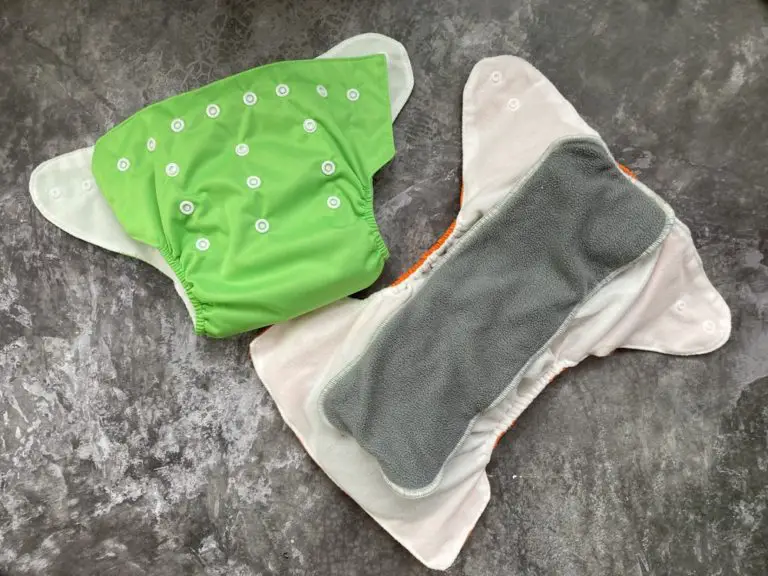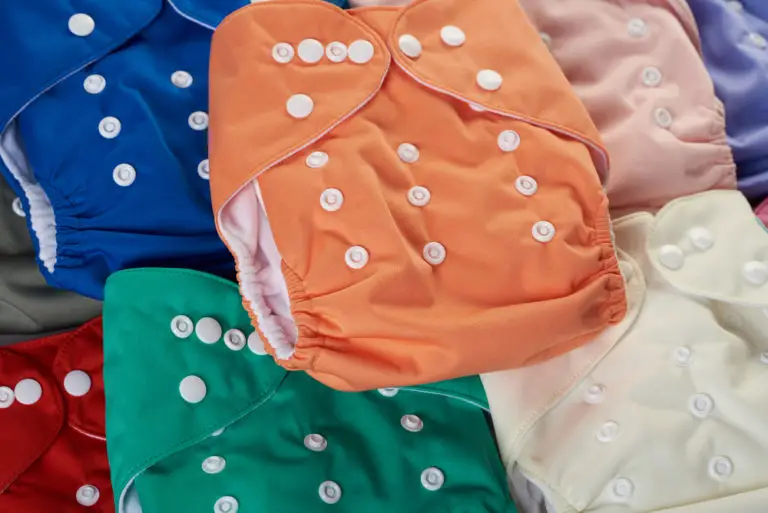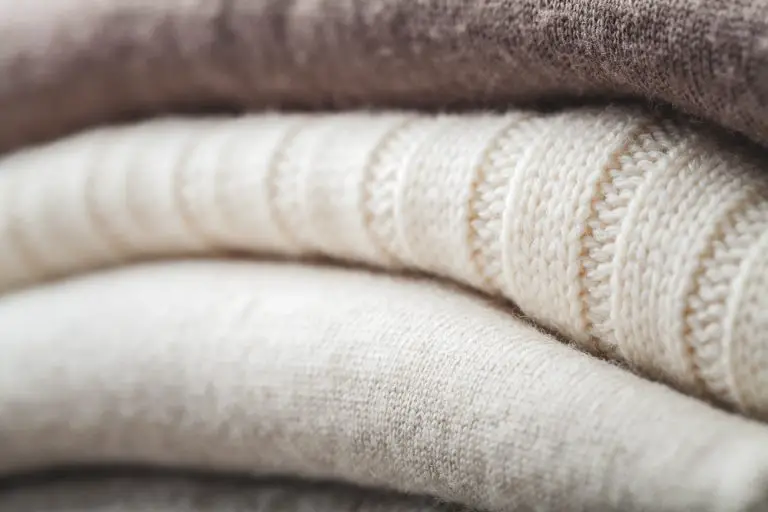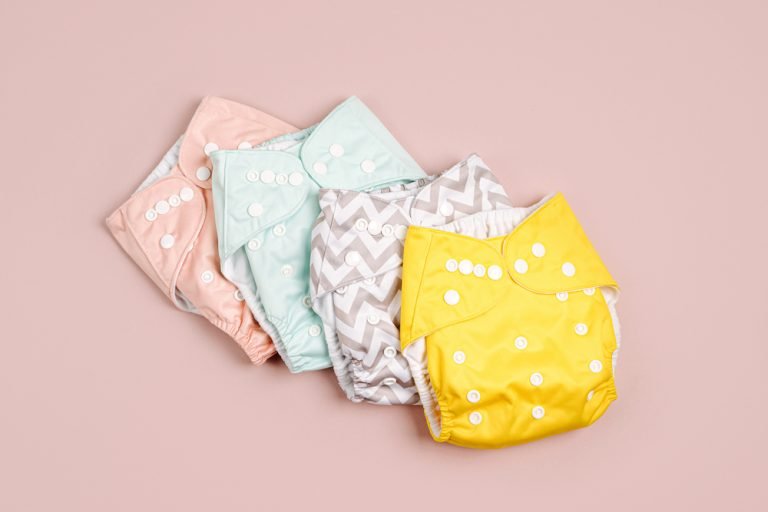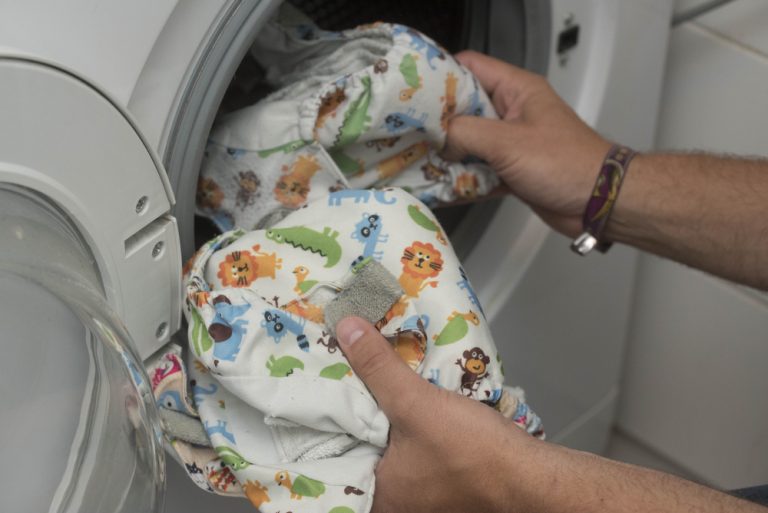Modal Fabric: Properties, Pricing & Sustainability (2024)
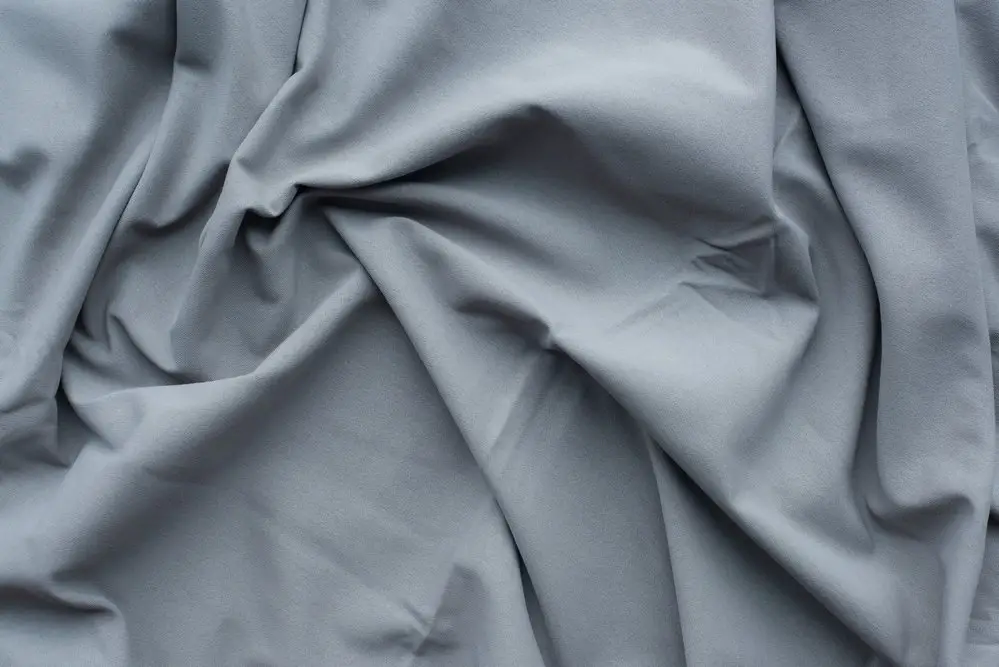
Modal fabric is a lightweight, stretchy, and breathable fabric made from the pulp of trees. It is commonly used for clothing such as pajamas and underwear and household textiles like bedsheets. A fairly new fabric only invented in the 1950s, modal has revolutionized the clothing and textile world as an environmentally friendly and biodegradable synthetic fabric.
Fabric Profile
Fabric Name: Modal
Synonyms: Rayon, High-wet-modulus rayon
Fiber Type: semi-synthetic
Breathability: Very breathable
Absorbency: Very water-resistant, high moisture-wicking properties
Characteristics: Lightweight, breathable, moisture-wicking, shrink-resistant, durable, colorfast, eco-friendly
Washing Requirements: Wash in cold water
Common Uses: Underwear, pajamas, sheets, sportswear, t-shirts
Heat Press Temperature: Iron on low on the opposite side.
- What is Modal?
- Types of Modal Fabric
- Modal Fabric Characteristics
- Downsides of Modal Fabric
- Common Uses of Modal Fabric
- Modal Fabric Pricing
- How is Modal Made?
- Where is Modal Manufactured?
- Modal Fabric Environmental Impact
- Modal Fabric Certifications
- History of Modal Fabric
- Modal Fabric Alternatives
What is Modal Fabric?
Modal fabric is a semi-synthetic fiber made from beech tree pulp and some synthetic components. Modal cloth is a type of rayon but is more durable and flexible than traditional rayon. Modal is commonly blended with other textiles such as spandex or cotton to increase its strength and durability.
Modal was invented in Japan in the 1950s, and since its creation, there have been additional types of modal created, such as MircoModal and Modal Air. Modal fabric pricing tends to be more costly than many other fabrics but has many positive attributes that make it worth the extra cost for some.
Modal is a popular fabric choice in the manufacturing of pajamas, underwear, activewear, bedsheets, and other household textiles. It is easy to wash and dry and is considered an eco-friendly textile because it is biodegradable and doesn’t require as many chemicals or natural resources as other synthetic textiles.
Modal vs. Cotton vs. Polyester
Modal and cotton are both plant-based, while polyester is entirely synthetic. Modal is made using pulp from beech trees, and cotton is made from the cotton plant. Polyester is made using fossil fuels and is a petroleum-based fabric.
Modal is often blended with cotton to make it stronger and more durable. Both cotton and modal are prone to wrinkling, but modal holds its shape better. Even though cotton is a natural fiber, it is well documented that cotton production leads to soil erosion and uses massive amounts of water to produce.
Polyester production often pollutes the local waterways and land and releases toxic chemicals into the air. Moreover, unlike modal and cotton, polyester is not biodegradable and is one of the leading causes of microplastic pollution in the worlds’ oceans.
Modal is excellent at wicking moisture away, which cotton is not, and is highly breathable, which polyester is not. Like cotton, modal has a smooth, soft texture and is considered a comfortable fabric to wear. However, some types of polyester can be stiff and scratchy to the wearer.
Types of Modal Fabric
Modal was first invented in the 1950s, and since that has gone through a few modifications. While there are not as many different types of modal or rayon as there are some other fabrics, there are still a few versions of the fabric available. The types of rayon manufactured today, in addition to modal, are viscose rayon and lyocell.
Viscose Rayon
Modal and viscose rayon are remarkably similar fabrics, but there are a few minor differences to be aware of between the two. Firstly, the process of making viscose is more complex than making modal or traditional rayon. Secondly, modal rayon is considered more lightweight and breathable.
Although viscose rayon was initially invented as a substitute for silk, modal rayon is much more prevalent in clothing these days. However, viscose still has many applications in the industrial sphere, such as in tires and automotive belts.
Most modern clothing manufacturers now view viscose rayon as a substitute for cotton because it could not live up to natural silk’s high quality and durability.
Lyocell
Lyocell fabric is very similar to modal and is another type of rayon; however, lyocell is a 100% natural form of rayon. Because there are no synthetic components to lyocell, it is the only type of rayon that can be certified organic.
Lyocell is very soft to the touch and is often used as a substitute for cotton or silk. In addition, lyocell fabric is an extremely tough and strong fabric and, unlike cotton, is resistant to pilling. Lyocell blends well with other fabrics and is commonly blended with cotton, silk, rayon, polyester, nylon, and wool.
Lyocell and modal cost about the same and are priced competitively when compared to cotton. Many consumers cannot tell the difference between lyocell and cotton just by touch.
Modal Fabric Characteristics
The characteristics of modal fabric are overwhelmingly positive, making it a well-loved fabric by many clothing manufacturers and consumers.
To begin, modal fabric texture is soft, and it drapes well when worn. Its soft silky texture is comfortable to wear against the skin, making it a popular choice for underwear, thermal underclothes, and pajamas.
Additionally, the modal fabric holds its color well, resists shrinking, and is exceptionally lightweight and breathable. Modal fabrics are also durable, stretchy, highly absorbent, and don’t pill. Because of these traits, modal clothes are a popular choice for athletes and workout gear.
Another benefit of using or wearing modal clothing is that it is eco-friendly to produce and biodegradable.
Additional modal fabric properties include that it doesn’t crease, is easy to wash and dry, and blends well with other fabrics making it highly versatile for both clothing and houseware.
Downsides of Modal Fabric
Modal fabric qualities are primarily positive, but there are a few downsides to take into consideration. First is that more people seem to have an allergic reaction to modal than other types of fabric.
This is primarily because 100% modal is made from trees, so people with allergies to pollen, sap, or other tree types modal may cause your skin to itch or a rash to break out.
A second drawback is that modal fabric durability is not as strong as other fibers, which can cause it to run or tear. This is why modal is often used as undergarments or blended with other textiles.
Third, while the modal fabric is widely considered an eco-friendly fabric, not all manufacturers are committed to the same levels of sustainability. For example, many manufacturers in China do not provide records of their tree harvesting; there are concerns that these trees are harvested from the rainforests.
Common Uses for Modal Fabric
Modal material is most commonly used to make undergarments such as underwear and long johns, pajamas, and home goods like sheets and bath towels. Modal is also commonly used in sportswear, such as yoga pants, biking shorts, and swimsuits, especially when blended with spandex to make it stretchier.
Because modal becomes more robust and more durable when combined with other fabrics, it is common to find products that are a modal blend. Modal can be blended with almost any other fabric, synthetic or natural. Many people don’t even notice their clothing is a modal blend because it feels similar to cotton against the skin.
Modal is also used to make a wide variety of clothing, including socks, pants, t-shirts, and dresses. Because modal absorbs sweat so well, it is a popular choice for children’s clothing because it will keep them dry and comfy. In addition, modal is sometimes used to make cloth baby diapers.
Modal Fabric in Cloth Diapers
Cloth diapering enthusiasts often compare modal to bamboo because they both use plant pulp as the textile base. However, unlike bamboo products, modal uses tree pulp, most commonly beech.
Parents like modal because it has a soft and silky texture and is wonderfully absorbent. Another benefit of using modal cloth diapers is that the fabric retains its softness even after repeated washings.
One benefit modal has over a lot of the textiles used in cloth diapering is that it is resistant to mineral build-up, which can cause diapers to lose their absorbency or cause them to retain odors.
The downside for some parents is that modal cannot be certified as organic because it has some synthetic components.
Modal is most often used for the inner, absorbent layer of the diaper or as diaper inserts. Modal is safe to put next to a baby’s skin which is another reason it works well in cloth diapers.
Modal Fabric Pricing
Modal fabric by the yard is more expensive than many fabrics. It is on par with 100% cotton and organic cotton, but modal fabric price can vary greatly depending on where it was manufactured and the process used to create it.
Developed countries which use sustainable practices and have better working conditions are likely to produce fabric with a higher price tag.
On average modal fabric purchased from your local fabric store will cost about $13.99 to $15.99 per yard. However, it is possible to find some modal blends on the lower end of the spectrum around $6.99 per yard.
High-quality modal like MicroModal will cost in the $20 per yard range.
Bed sheets are one of the most popular items manufactured with modal. Depending on the modal fabric quality and thread count, you can expect to pay anywhere from $60 to over $200 for one set of sheets.
How is Modal Fabric Made?
The first step in manufacturing modal textiles is harvesting trees, traditionally beech, and breaking down the trees to extract the cellulose.
To extract the cellulose, the trees are broken down into chips and purified. Once the cellulose has been extracted, it is turned into sheets that are then steeped in large vats of caustic soda, more commonly known as lye.
Once the steeping process has finished, the sheets are broken into crumbs and mixed with carbon disulfide. It is again soaked in caustic soda and then processed through a spinneret to create fibers that can be turned into yarn.
Once the fibers have been stretched into yarn, they are washed, bleached, dried, and formed into spools. Depending on what the yarn will be used to make, it could be subjected to a series of additional treatments—for example, pre-shrinking or fire-resistant coatings. It may also be dyed into different colors.
Where is Modal Fabric Manufactured?
Despite being invented in Japan, the leading manufacturer of modal fabric is Lenzing Technologies in Austria.
Lenzing modal is sustainably manufactured and only uses trees grown and harvested with a PEFC certification, Programme for the Endorsement of Forest Certification. While Lenzing is based in Austria, it has factories worldwide, including some of its largest in China.
Lenzing also has competitors in the Chinese market as well as other companies in Japan, the Philippines, and India that all produce textiles and modal.
However, the issue with some of these competitors is that modal sustainability cannot be guaranteed. In addition, there are concerns among environmentalists that many of these uncertified companies harvest their trees from the shrinking rainforests and do not use sustainable practices.
Modal is also produced in Germany, Pakistan, and the United Kingdom, and there is a small quantity of modal made in the U.S.
Modal Fabric Environmental Impact
Modern modal fabric, which is produced with sustainable practices, is considered a reasonably eco-friendly fabric. However, the modal manufacturing still uses several chemicals such as carbon disulfide, which can harm local wildlife when it enters the air or waterways.
Additionally, humans exposed to carbon disulfide fumes in unsafe working conditions may experience kidney damage, liver damage, blindness, psychosis, coma, and even death.
Another downside is that modal production utilizes large amounts of water and energy and contributes to microfiber pollution via waste products.
The good news is that Lenzing manufactures the majority of the world’s modal. This company is committed to sustainable practices and only used trees certified by the PEFC, which ensures that they do not contribute to the ongoing deforestation of the rainforest.
Moreover, modal is biodegradable, unlike most synthetic fabrics, which is another reason it is an eco-friendly choice.
Modal Fabric Certifications
There are several certifications that modal manufacturers can seek. The first is Standard 100 by Oeko-Tex. This is one of the most sought-after and recognizable fabric certifications. Standard 100 takes into account chemicals and products used, sustainability practices, and the well-being of workers.
The European Union offers the EU Ecolabel. Companies that can claim this trademark offer products certified to have a lower environmental impact than comparable products on the market. Manufacturers of modal can ensure sustainability by using trees certified by the Forest Stewardship Council (FSC).
The FSC confirms that the forest used for textile production is being managed in a sustainable way for the environment, preserving biological diversity, and benefiting the lives of the people and workers in the area. There are ten principles a forest operation must follow to achieve FSC certification.
PEFC certification is a fourth category modal companies can earn certification in. PEFC certification ensures that trees grown and harvested to produce the fabric have been done in an environmentally sustainable manner.
History of Modal Fabric
Unlike some fabrics, the modal fabric history is somewhat short-lived. For example, the modal fabric was invented in Japan in the 1950s. It was originally produced using beech tree pulp; however, other trees are also used in the process today.
In 1964 the Austrian company Lenzing began selling modal and in the late 1970s created a way of bleaching the wood in a more environmentally-friendly fashion. Today, Lenzing is the leading manufacturer of the modal.
Modal fabric is historically known as the “underwear fabric” and has been and still is widely used in the production of underwear, undergarments, long johns, and pajamas due to its softness and breathability.
Modal is a type of rayon, and rayon was initially created as a competitor to silk. However, today, modal is much more like cotton and is sometimes confused as such since rayon struggled to compete with silk’s natural strength and durability.
Modal Fabric Alternatives
Lyocell fabric is the best alternative to modal because the two are essentially the same fabric. The difference is that lyocell is competently natural; its production has less of an impact on the environment.
As a result, Lyocell uses fewer chemicals and resulting in less water and air pollution. Lyocell is breathable and durable and is similar to modal fabric weight.
Cotton is another alternative to modal as it has a similar texture and price point. In addition, cotton is an all-natural fiber, and unlike modal, it can be certified as organic because it has no synthetic components. It is also biodegradable like modal.
However, cotton is more prone to wrinkling than modal, and unlike cotton, modal fabric will not shrink.
Traditional rayon fabric is a third alternative to modal. Rayon is not as strong as modal, but it is more absorbent. Unlike modal, which is partially synthetic, rayon is a 100% synthetic fiber.
FAQ
What is modal fabric?
Modal is a semi-synthetic fiber that traditionally used the bulb of beech trees as its base. Modal facts include that it is lightweight, breathable, and soft.
Is modal a natural fiber?
Modal is considered semi-synthetic because while it uses the pulp of trees as its primary ingredient, it also contains synthetic materials and goes through a complex chemical process.
What does the modal fabric feel like?
Modal fabric is often compared to cotton in texture and feel. It is soft and lightweight.
Is modal cooler than cotton?
Both modal and cotton are very breathable, but modal does a better job at wicking moisture away from your body which has the effect of making you feel cooler.
Is modal the same as polyester?
No, modal and polyester are very different. For example, modal uses tree pulp as its base, whereas polyester is a petroleum-based fabric.
Is modal stronger than cotton?
Modal is considered strong than cotton, however, unlike cotton, modal becomes weaker when it is washed frequently.
Is modal good for cold weather?
Modal isn’t traditionally a fabric people go for when they’re looking for warmth. It is very breathable and wicks moisture away making it a better summer fabric.
Is modal hypoallergenic?
Modal is a hypoallergenic fabric, however, some people who are allergic to pollen, sap, and trees may have an allergic reaction in the form of a rash, hives, or blisters.

Laurel Davidson
Laurel brings her passion for parenting and years of problem-solving experiences to ParentingMode. She is the editor of ParentingMode, ensuring that the content is relevant and valuable to the readers. Laurel received her master’s degree in public administration with a certificate in economic development. She is a stay-at-home mom, raising two adorable kiddos, Aurora and Thomas. Laurel enjoys sharing her experience as a parent, traveling, and good food.

